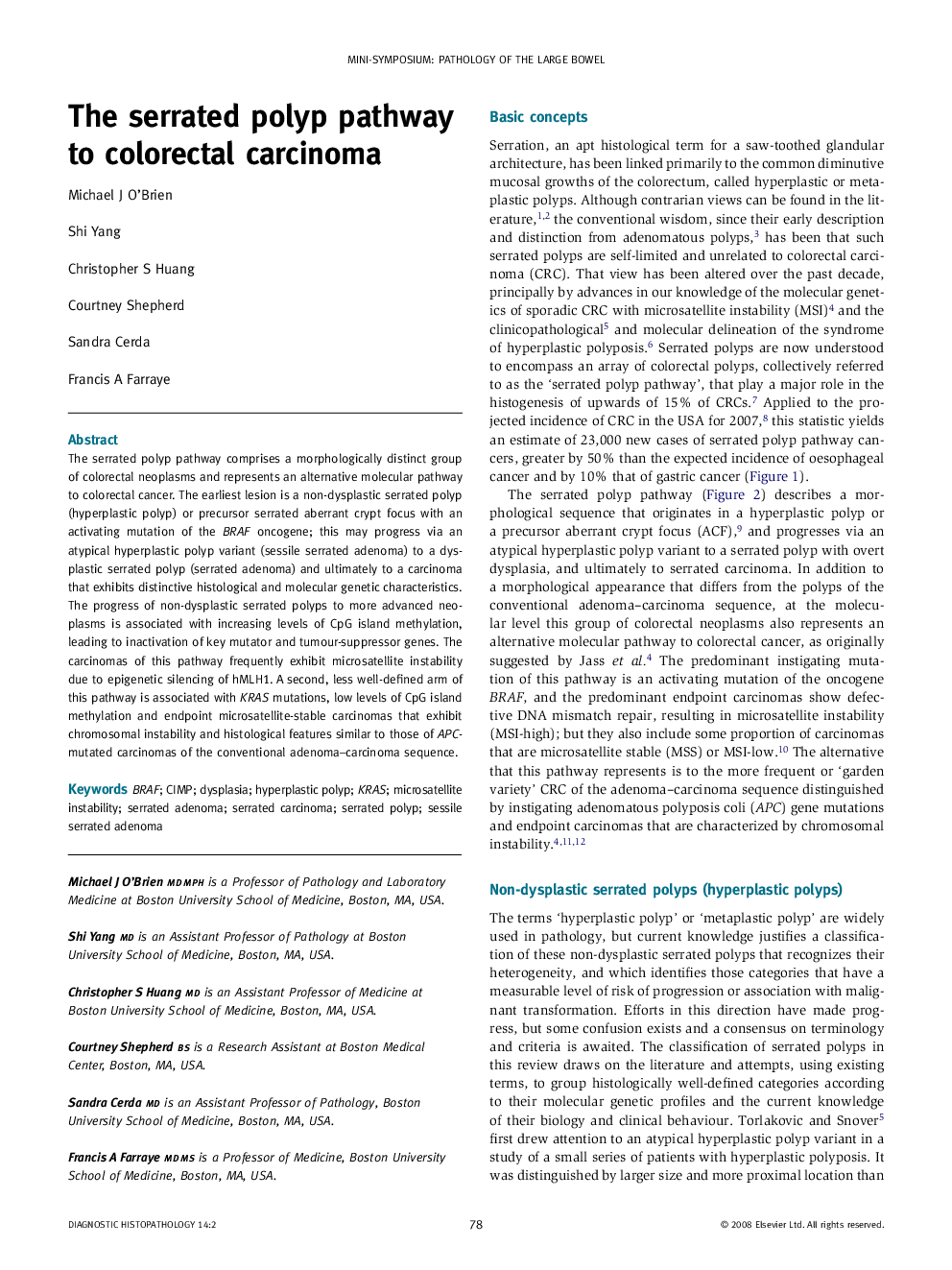| کد مقاله | کد نشریه | سال انتشار | مقاله انگلیسی | نسخه تمام متن |
|---|---|---|---|---|
| 4131619 | 1271250 | 2008 | 16 صفحه PDF | دانلود رایگان |

The serrated polyp pathway comprises a morphologically distinct group of colorectal neoplasms and represents an alternative molecular pathway to colorectal cancer. The earliest lesion is a non-dysplastic serrated polyp (hyperplastic polyp) or precursor serrated aberrant crypt focus with an activating mutation of the BRAF oncogene; this may progress via an atypical hyperplastic polyp variant (sessile serrated adenoma) to a dysplastic serrated polyp (serrated adenoma) and ultimately to a carcinoma that exhibits distinctive histological and molecular genetic characteristics. The progress of non-dysplastic serrated polyps to more advanced neoplasms is associated with increasing levels of CpG island methylation, leading to inactivation of key mutator and tumour-suppressor genes. The carcinomas of this pathway frequently exhibit microsatellite instability due to epigenetic silencing of hMLH1. A second, less well-defined arm of this pathway is associated with KRAS mutations, low levels of CpG island methylation and endpoint microsatellite-stable carcinomas that exhibit chromosomal instability and histological features similar to those of APC-mutated carcinomas of the conventional adenoma–carcinoma sequence.
Journal: Diagnostic Histopathology - Volume 14, Issue 2, February 2008, Pages 78–93